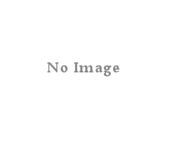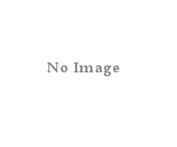


 |
Motorcycle Data Sheet Model: 1965 BMW R50/2 (conversion) Nickname: "Schwarzi" (Der Schwarzer Wolf AKA the Black Wolf) Engine: 495cc 2-valve boxer twin converted to later 898cc (60 HP) Years of Production: 1960-1969 Number Produced: 19,036 Purchase Date: November 2003 Previous Location: Phoenix, AZ Previous Owners: Unknown Mileage at Purchase: 0 (Rebuilt) Mileage Since Engine Rebuild: 0 Restoration Projection: A lot... Restoration Costs to Date: $460 |
My eventual goal for this /2 conversion bike, rebuilding a bare 1965 R50/2 frame with a later 1974 R90/6 engine and drivetrain, is to create a stylish yet practical sidecar outfit. up from a bare frame<, this motorcycle, which was sold to me on eBay as a frame only, stripped and ready for repainting and restoration, was my first foray into "vintage" Beemers, built during or before 1969 at the original Münich factory. This bike had started its life as a 1963 R50/2, a classic middle-displacement tourer of its day. I am rebuilding it as a "/2 conversion" using the '60s chassis with a '70s engine, electrical system, wheels, and other parts. When I first saw this /2 twin-loop frame, I already had many spare Airhead parts from my 70s bikes left over from my other ongoing motorcycle restorations, including a complete 600cc engine and a good /5 front end; a conversion seemed like a great way to use some of these spares and get in on the vintage bike mojo without the hefty front-end investment or the long-term maintenance hassle. There is a significant subset of the classic/vintage BMW motorcycle community interesed in discussing and performing these conversion projects.

As the project evolved, I eventually decided on finding an Earles leading link fork for the front end, in place of the /5 telescopic fork I already had, a model essentially identical to the model fit to US-market /2s after 1967. The tradeoff is some loss of quickness in steering for a sublimely plush and compliant ride, which is fine by me for this motorcycle. Of course, once I bit the bullet to do this, the project became substantially less efficient (and substantially more involved). Instead of drawing on my store of spare /5 front end parts, I was scouring the Internet for a restorable swingarm front end with all of its own unique bits and pieces that were incompatible with the parts from the later telescopic fork. I could also no longer use my /5 front wheel, brakes, or fender, as /2 versions these components would likewise need to be located. (I took solace in the hope that the orphaned parts from this restoration would eventually find a home on my 1973 R75/5, a bare frameset just back from powdercoating at rest in my storage unit...)
When complete, I am confident that this bike will make a sporty, stylish city and highway mount with a lot of poise on the road...
Restoration
This motorcycle is essentially just lying in boxes in my storage unit and on the shelves in my home office. Here are the major components I have been able to source to date, including copious spares already on hand from my other projects:

Restoration
This motorcycle is essentially just lying in boxes in my garage. Here are the major components I have been able to source to date, including copious spares already on hand from my other projects:
Reconstruction Chronology
December 2003
Acknowledgments
Thanks to the following individuals for assisting in this restoration project: Duane Ausherman, Barbara Bynum, Brock Downey, Virgil Elliott, Vern Fueston, David Makin, Charlie Moore, DL Powers, Jeff Roddick, Chuck Sherman, Bo Stewart, and Robert Valdez.